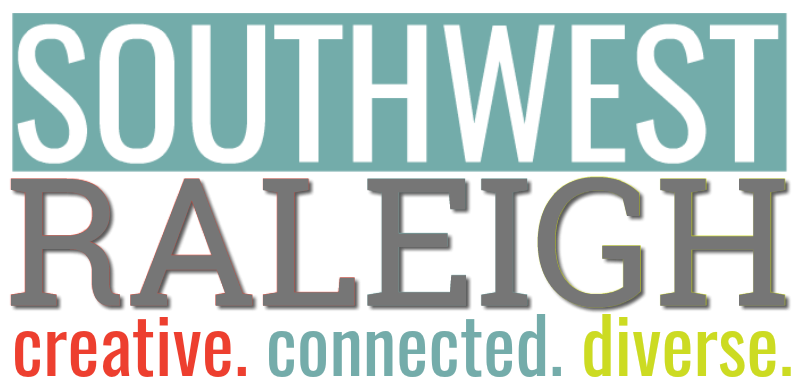Caraleigh Mill, located at 421 Maywood Avenue, is a designated a Raleigh Historic Landmark and is also listed in the National Register of Historic Places. As one of three surviving late nineteenth century textile mills in Raleigh, the original 1892 mill building is an excellent example of the then-popular Italianate style of architecture that was widely adopted for industrial buildings. Hallmarks of this style, including full-height pilasters surmounted by brackets, decorative brickwork, and segmental-arched windows, remain intact and are grandly displayed on the two-story brick building. The roof is opened by an intact monitor that allows natural light into the interior of the main building. The original 1892 mill building was quickly joined by a rear brick addition in 1900, and later expansions to house furnaces, machine shops, and warehouses date from around 1910, 1919 and the late 1950s. The mill complex gave rise to a late-nineteenth, early twentieth-century mill village of small brick and frame houses that stands today as an extremely rare surviving example of period workers’ housing in Raleigh.
The Caraleigh Mill company was chartered in 1891 by a group of prominent Raleigh businessmen. The president of the company was Alfred Augustus Thompson who served as mayor of Raleigh from 1886 to 1887, and who also was president of the Commercial National Bank. Mr. Thompson and his board purchased a tract adjacent to the Norfolk-Southern Railroad in what was then an undeveloped section south of the Capital City. Brick for the building construction was provided by Goodwin’s brickyard located on present-day US 401, and a spur line was constructed from the railroad to the mill building. Maywood Avenue, the main street of the adjacent mill village, was laid out, and the Caraleigh Mill, so named to commemorate “Carolina” and “Raleigh,” commenced production of sheet goods.
Between 1892 and the late 1920s, the mill company flourished and claimed the distinction of being the largest of the six mills in Raleigh. In 1892, the mill employed 235 adults who earned $12 to $13 a week, and by the 1920s, workers were earning between $40 and $50 a weeks. However, the mid-1920s saw a gut of textile manufacturing capacity in the United States, and that, together with the 1929 crash, precipitated the closing of Caraleigh Mill in 1929. In 1938 the mill was reopened under new management, and in 1943 was sold to the Lawton Company that produced raw yarn. In 1952, the mill again changed hands and was renamed American Woolen, and was then transferred to the Fred Whitaker Company that produced synthetics there from 1956 to 1999.
When the mill closed in 1999, it attracted broad interest from developers who wished to redevelop the property. Ultimately, Vaughn King, a local builder and developer, acquired the property and converted it into a condominium community that showcases the building’s original heavy-timber construction, hardwood floors, and expansive natural lighting. These historic features, together with modern amenities including a clubroom, fitness center, putting green, and dog park, have attracted a vibrant new community to the historic Caraleigh neighborhood. This combination of the historic architectural ambiance together with 21st-century convenience within a mile of downtown Raleigh gives South West Raleigh a unique resource that makes us very special.
Image courtesy of Raleigh City Museum.

